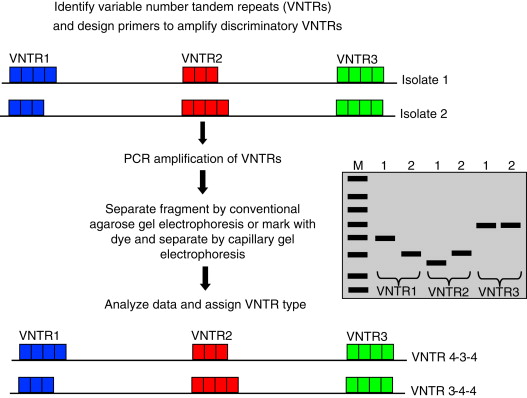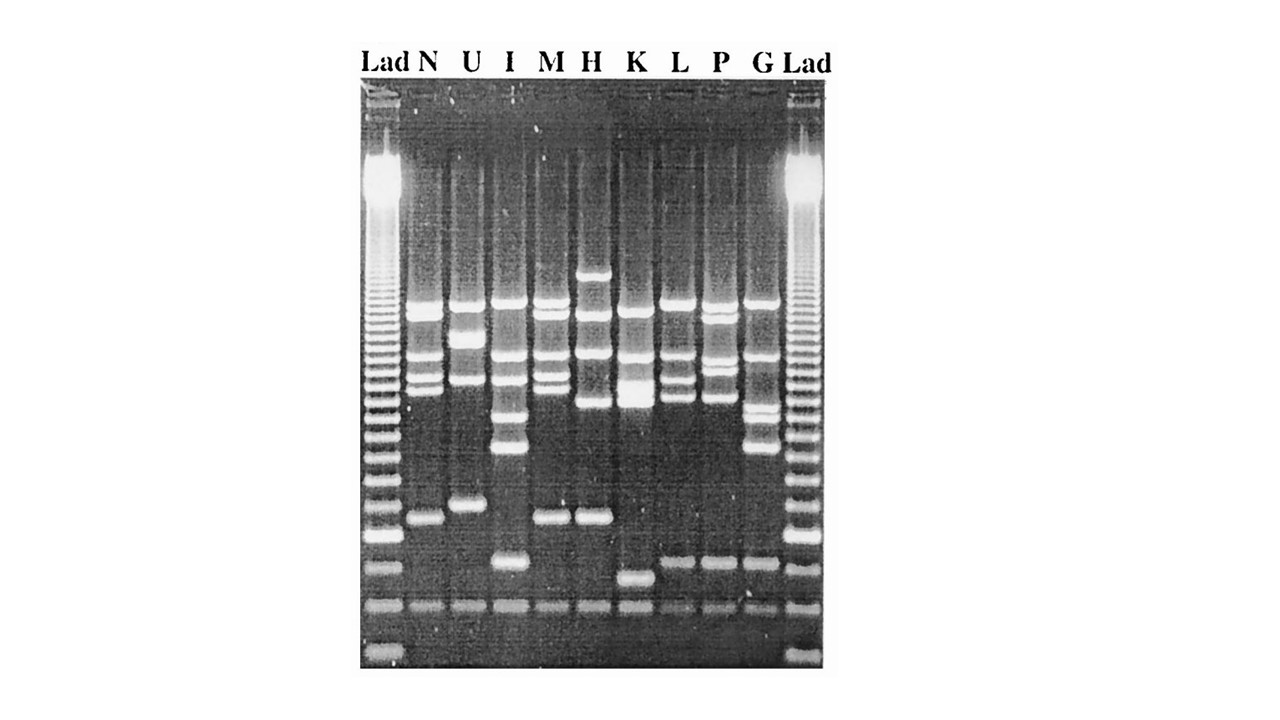35 MLVA typing
35.1 Multiple Locus Variable number of tandem repeats Analysis (MLVA)
MLVA (multiple locus variable number of tandem repeats analysis), is a PCR-based technique which can be used to discriminate between different strains of types of particular pathogens. Certain loci present on the bacterial chromosome contain variable numbers of tandem repeats (VNTRs) (e.g., in Figure 35.1, isolate 1 has 4 repeats of the sequence at locus 1, while isolate 2 only has 3 repeats). The varying number of repeats produce PCR products of different sizes.

This technique can be used to discriminate between different strains of Staphylococcus aureus based on the VNTRs at five different loci: the spa, clfA, cflB, sdr, and ssp genes. You will amplify these loci using PCR, and determine the size of the PCR products using agarose gel electrophoresis, as in Figure 35.2.

Work on ice.
Pipet carefully and accurately. Be especially careful when pipetting the Taq polymerase, as this is difficult to pipet accurately.
Watch what you touch – you are covered with nucleases and likely, your own commensal Staphylococcus aureus!
Stay organized – keep track of what you have added to your reaction and what still needs to be added.
Label your tubes carefully - they will be put on the thermocycler with the tubes from all of the other groups, you will need to be able to identify yours!